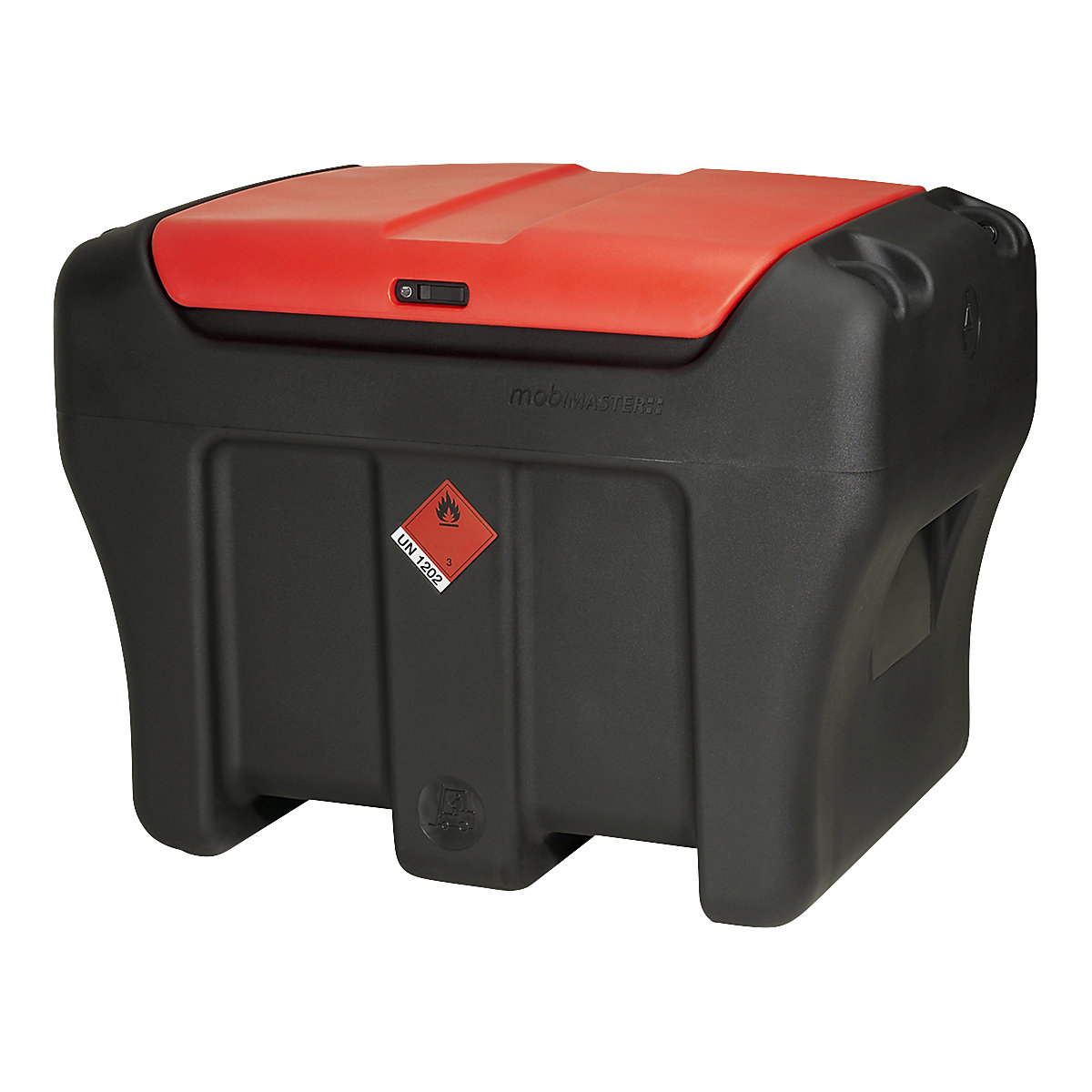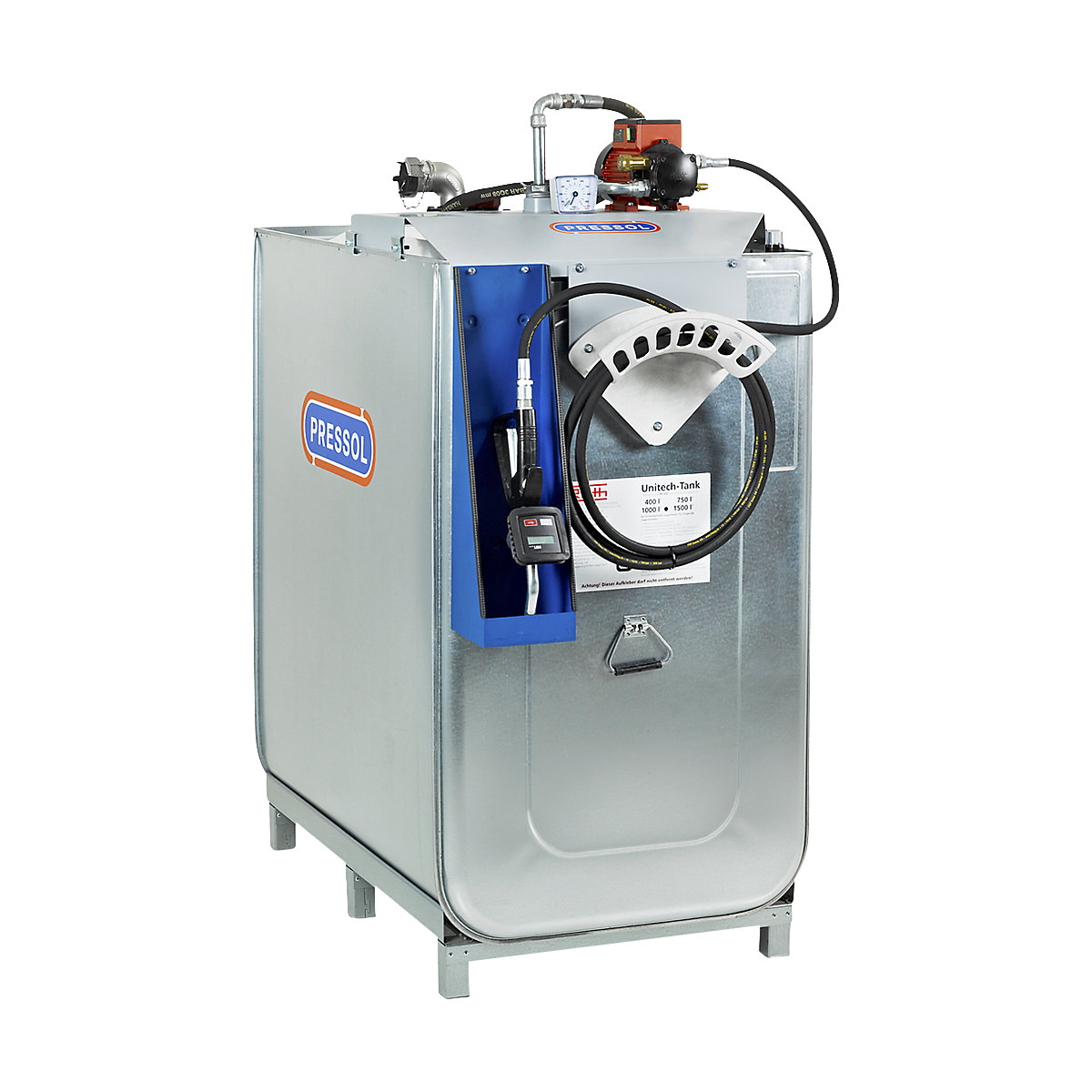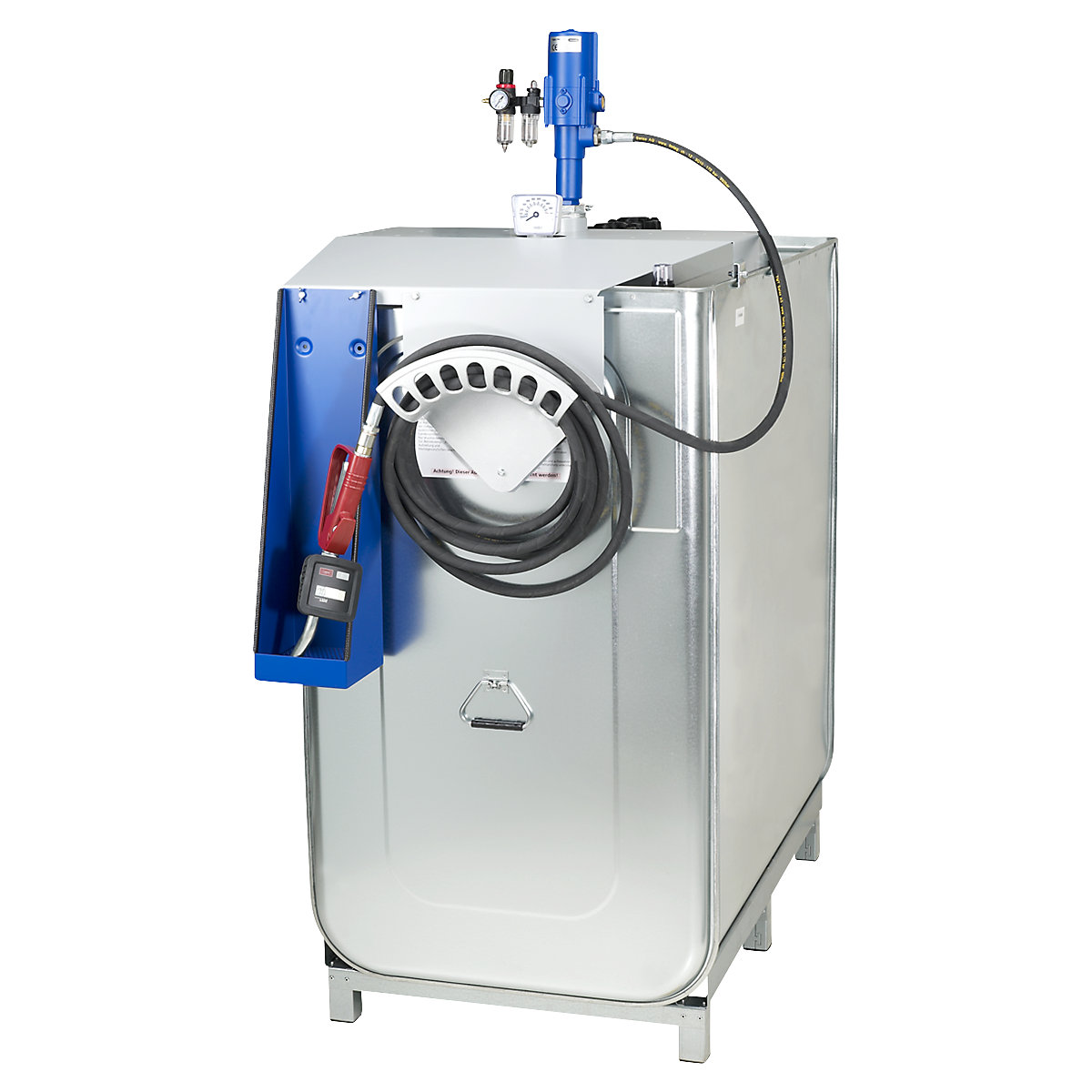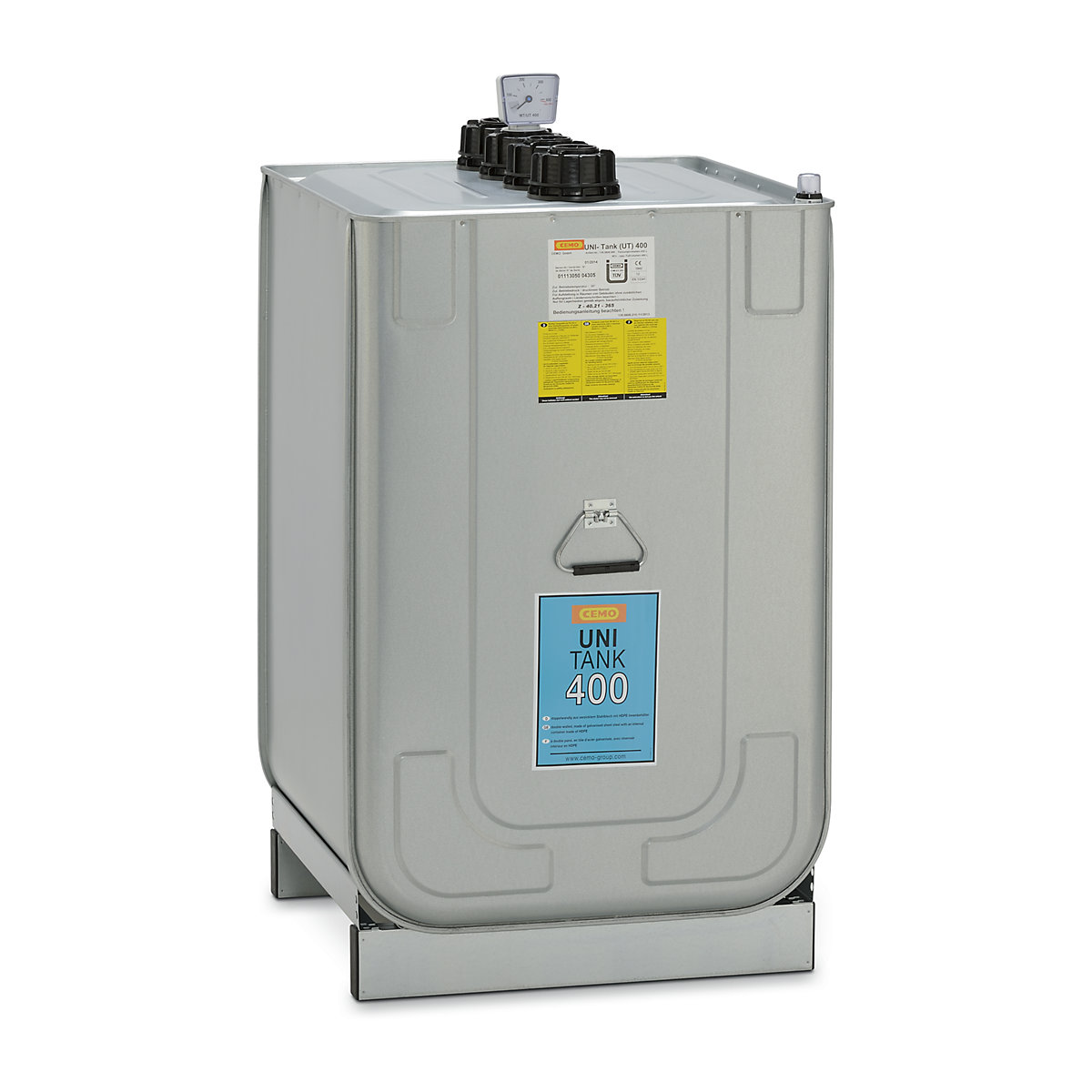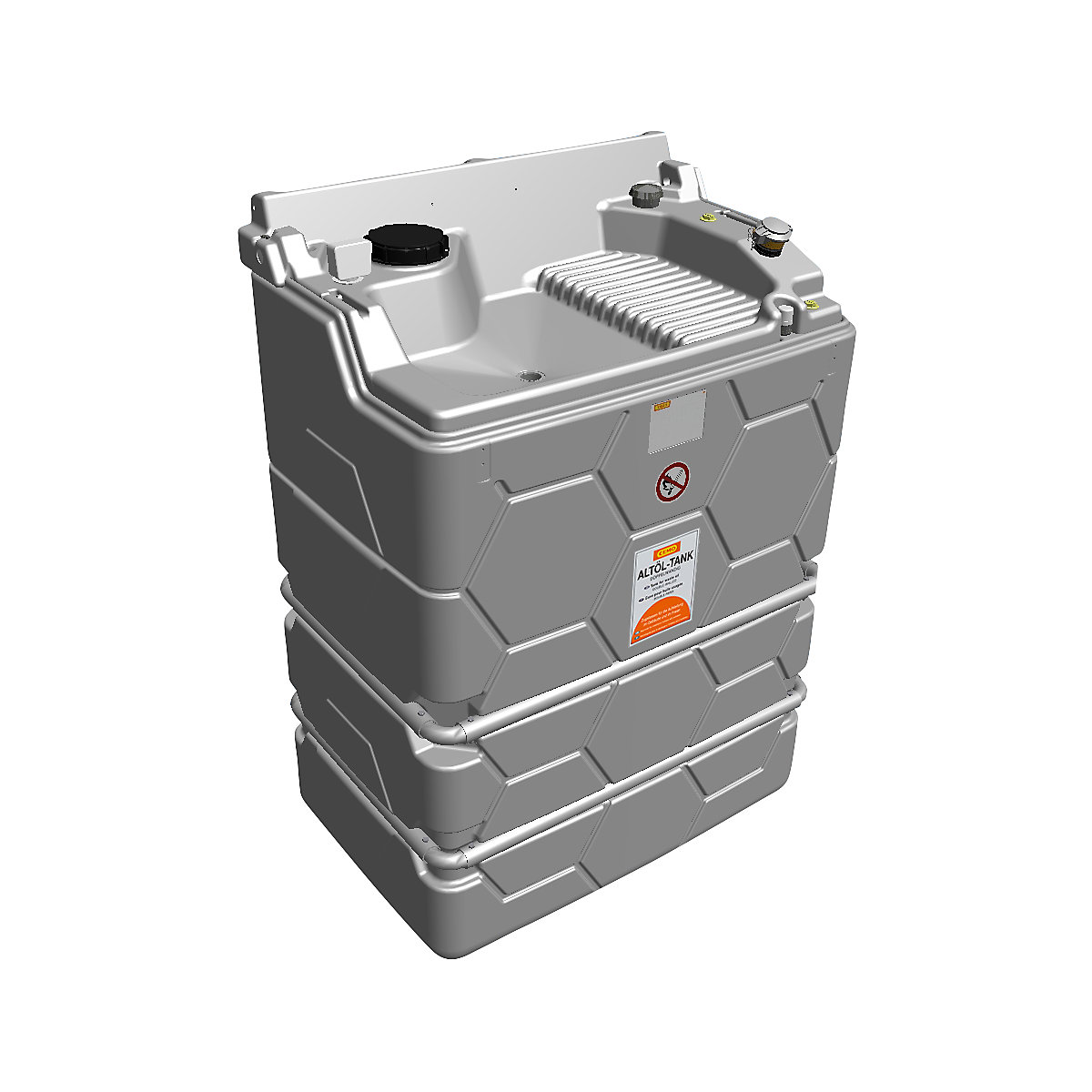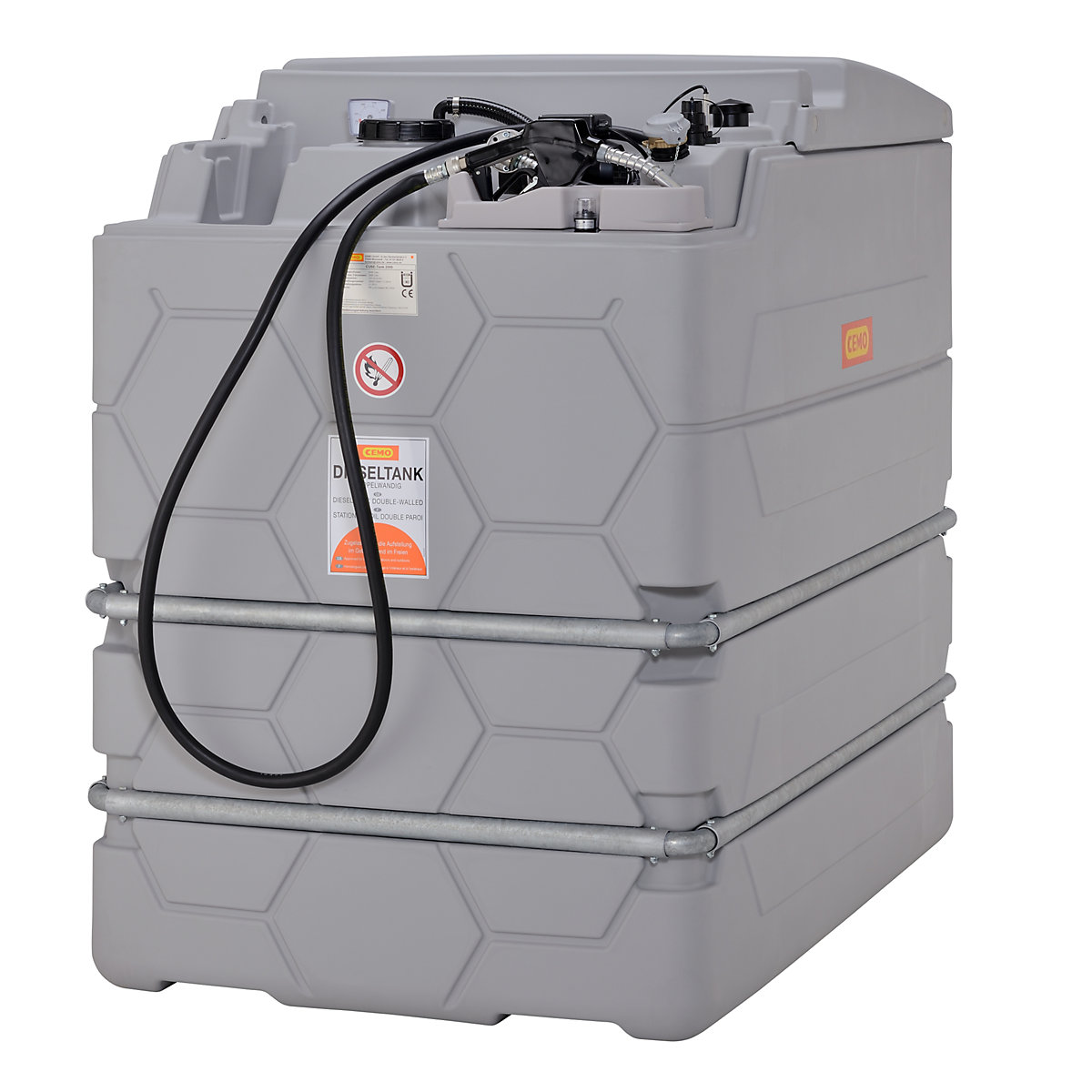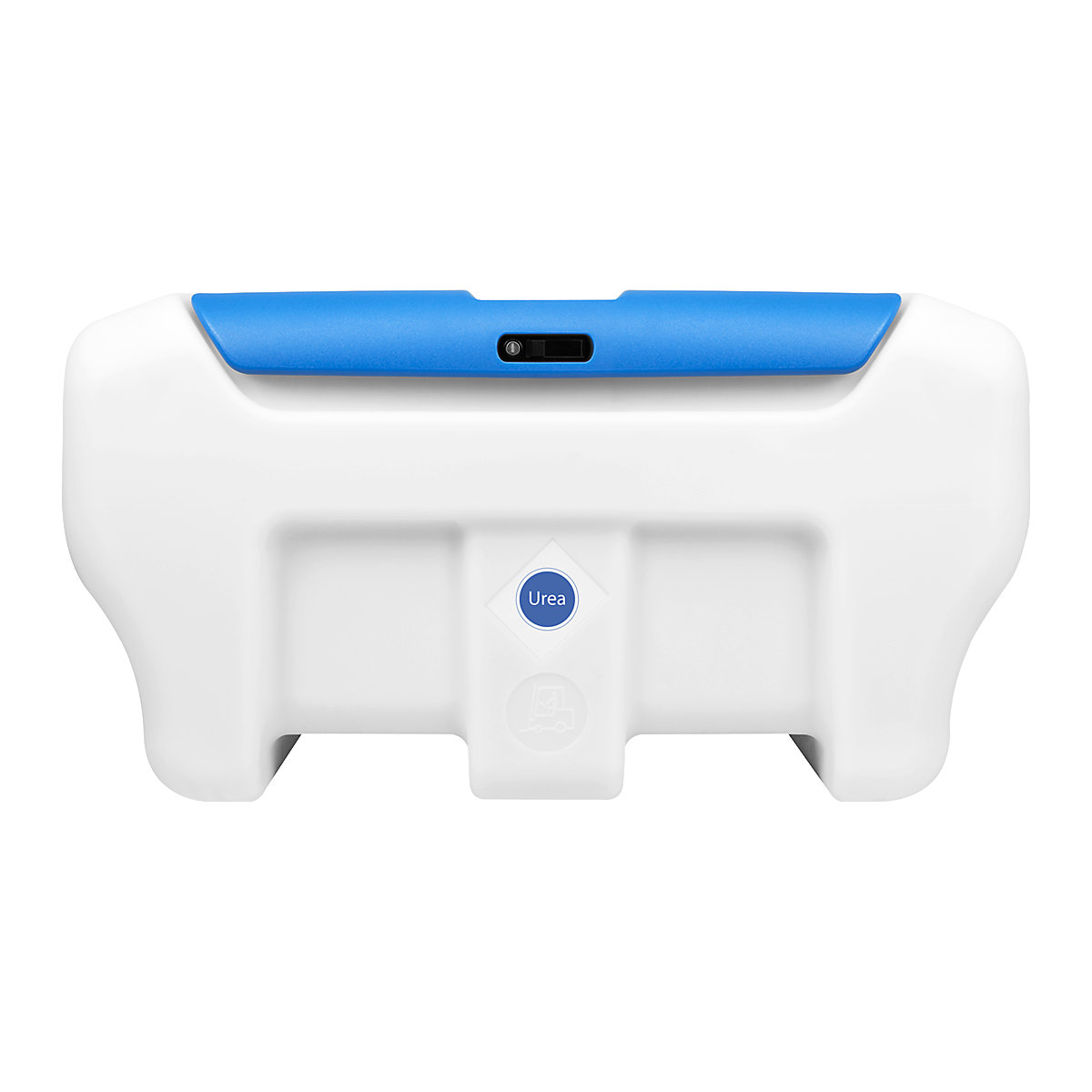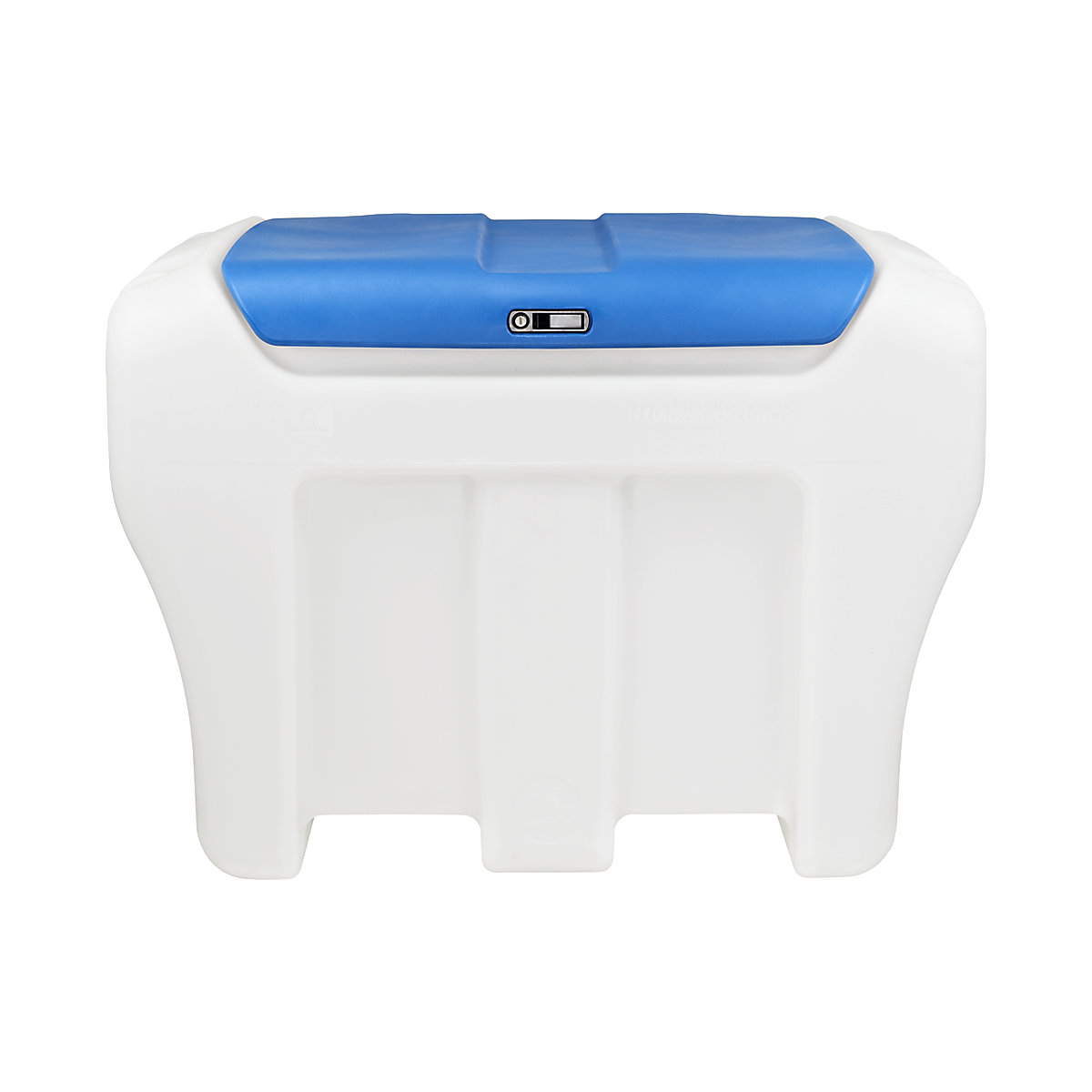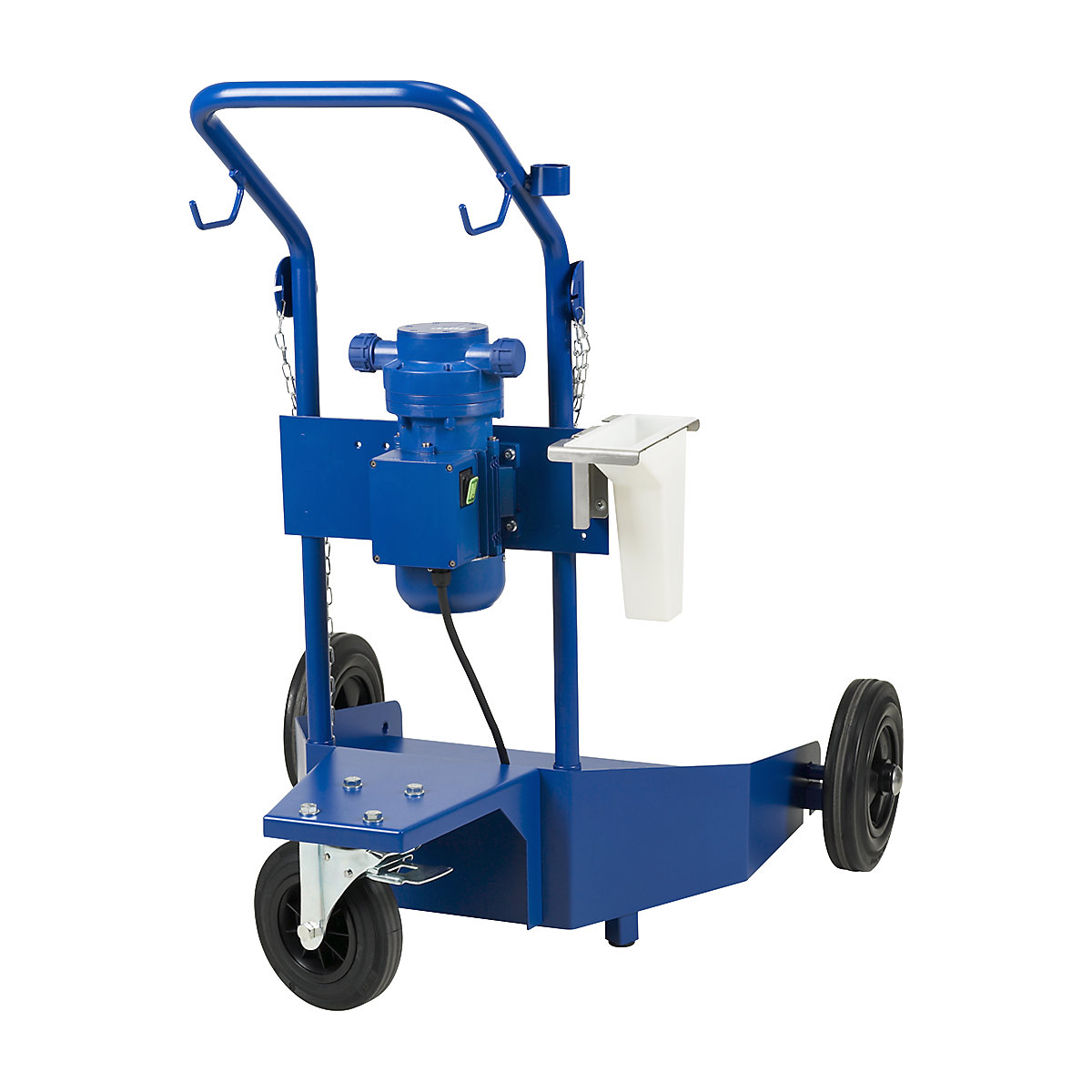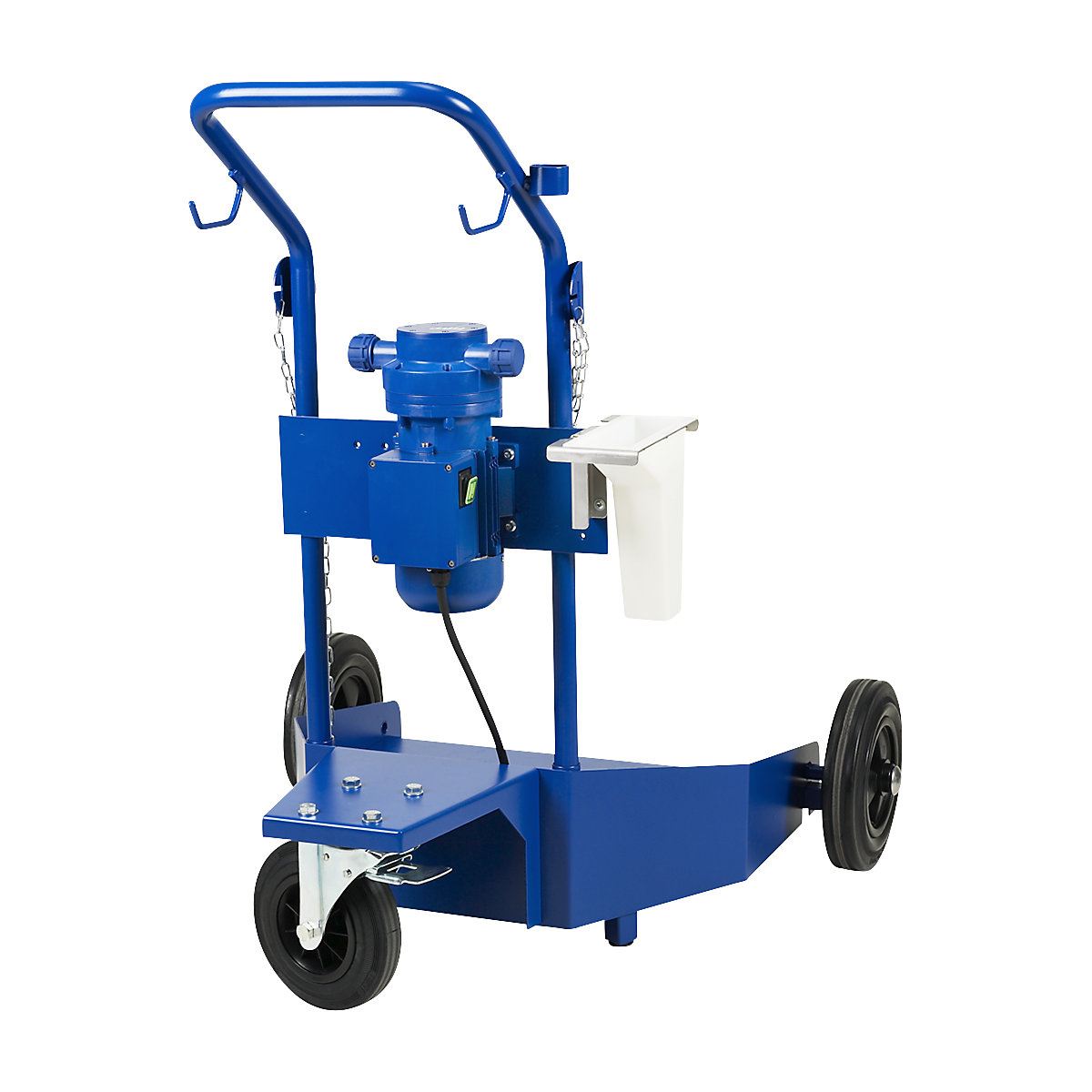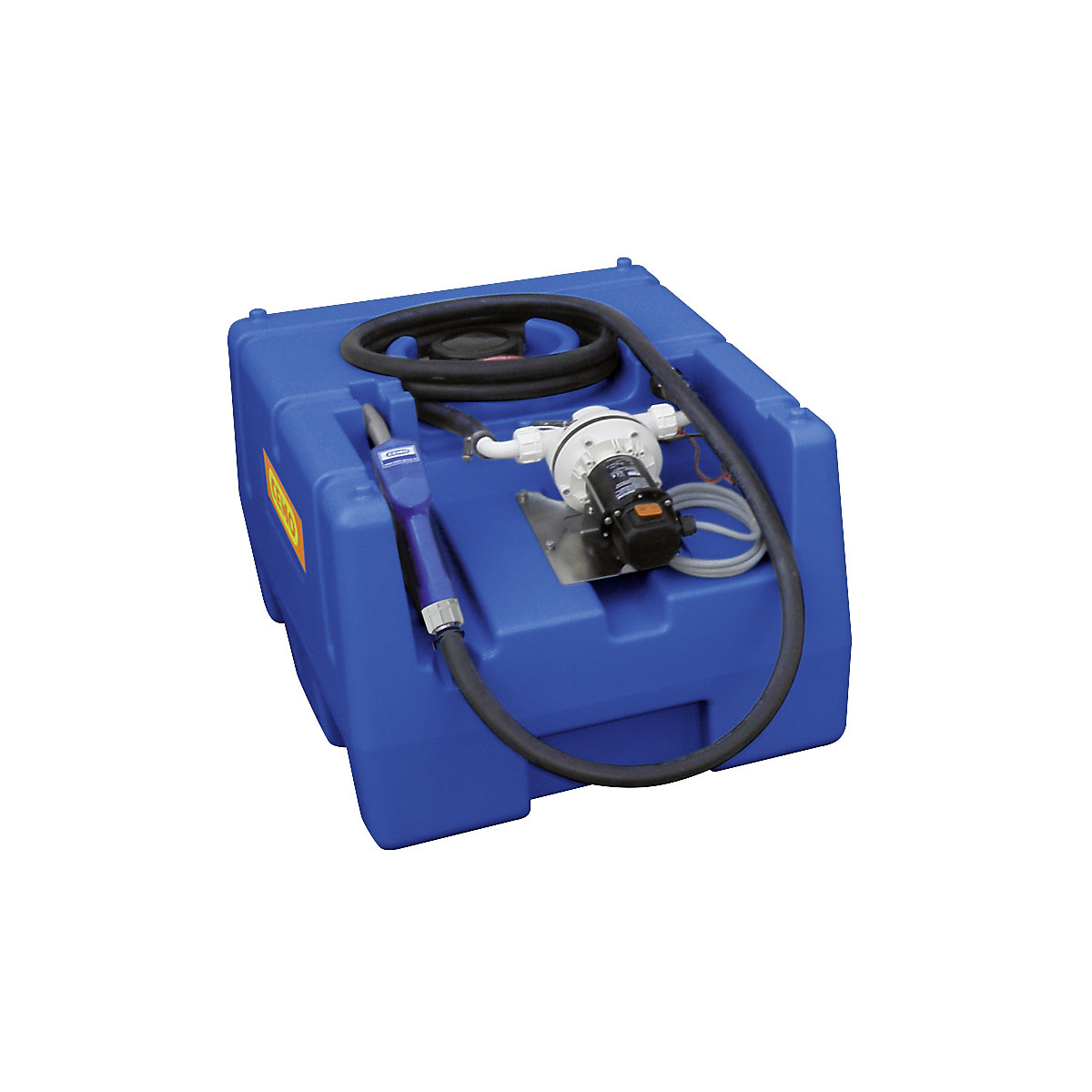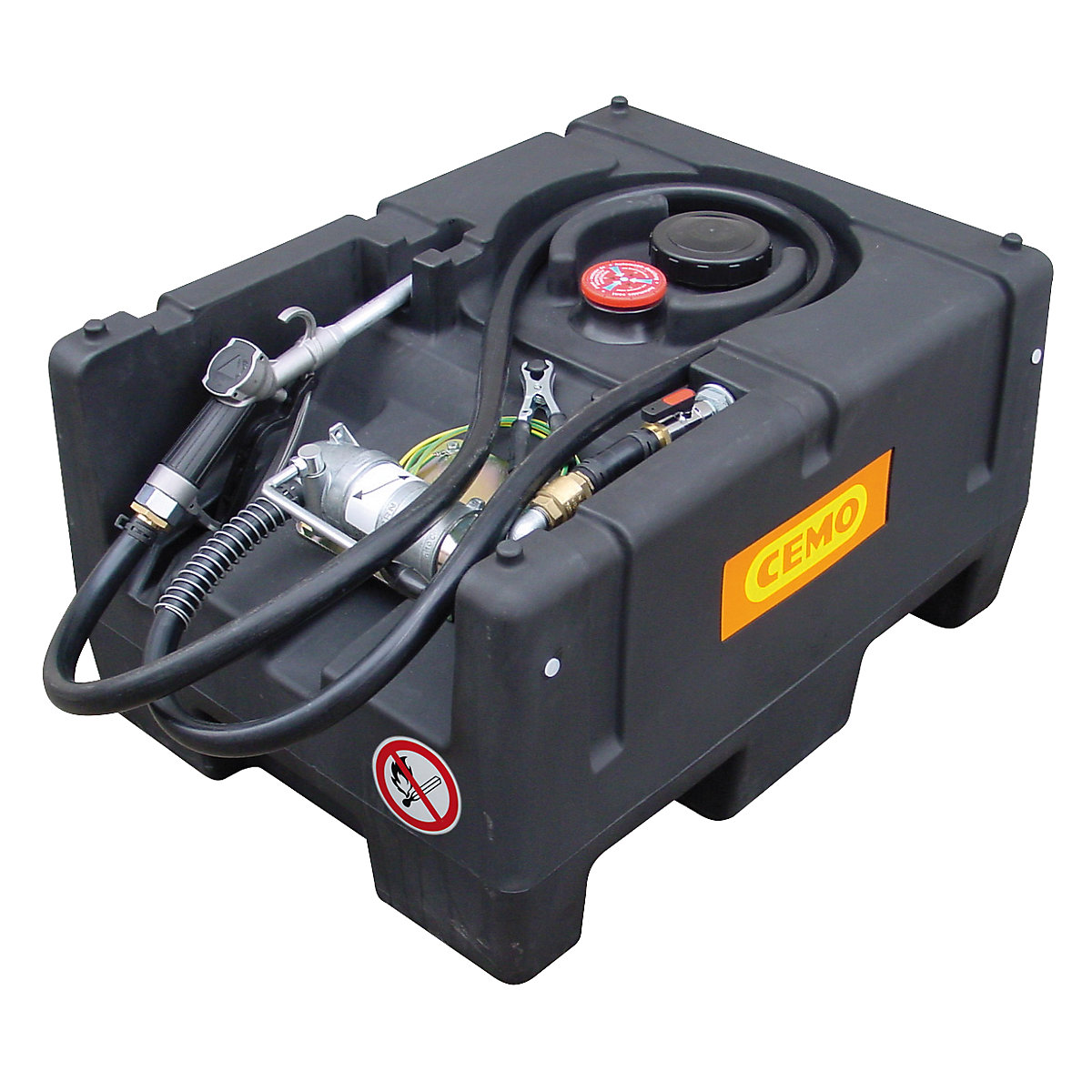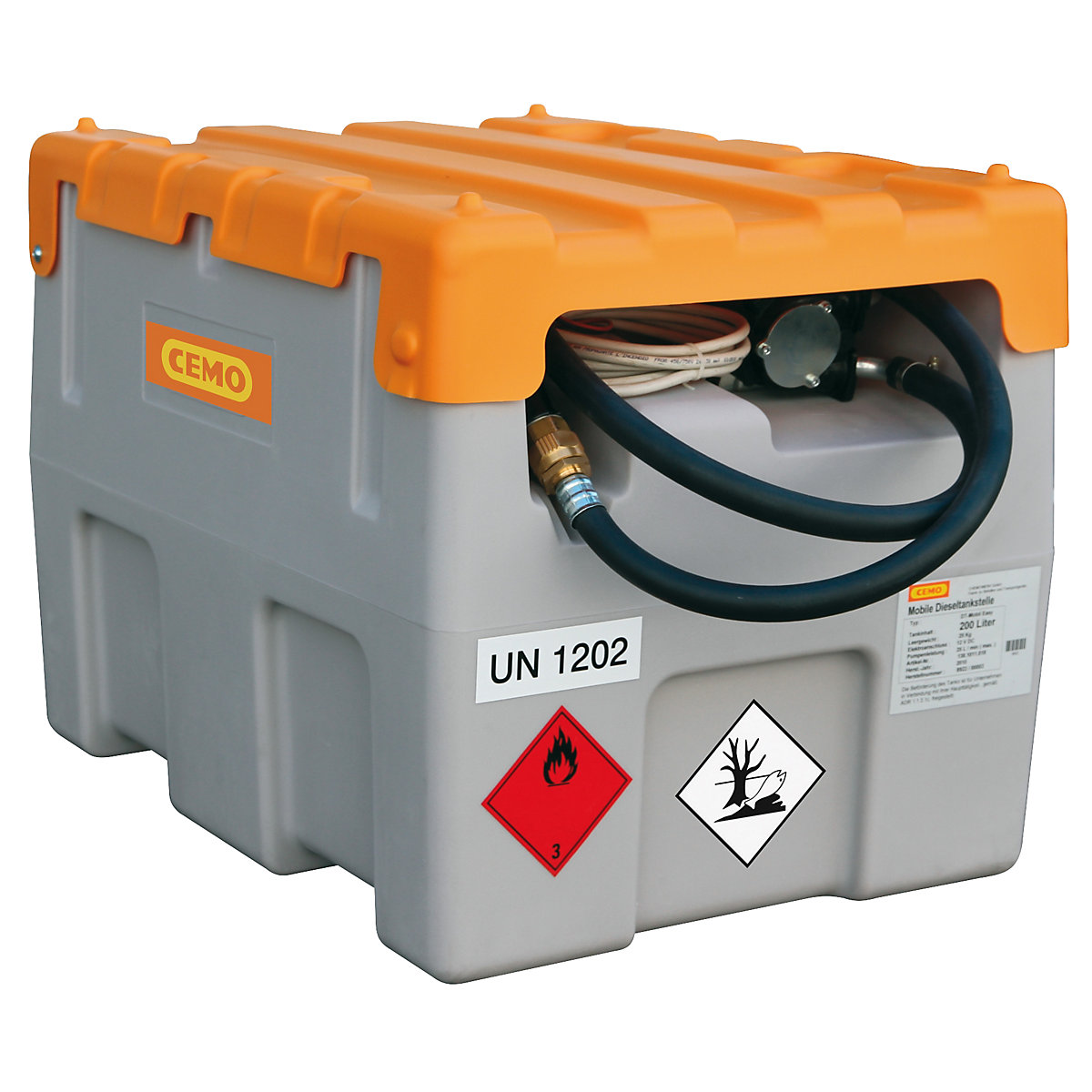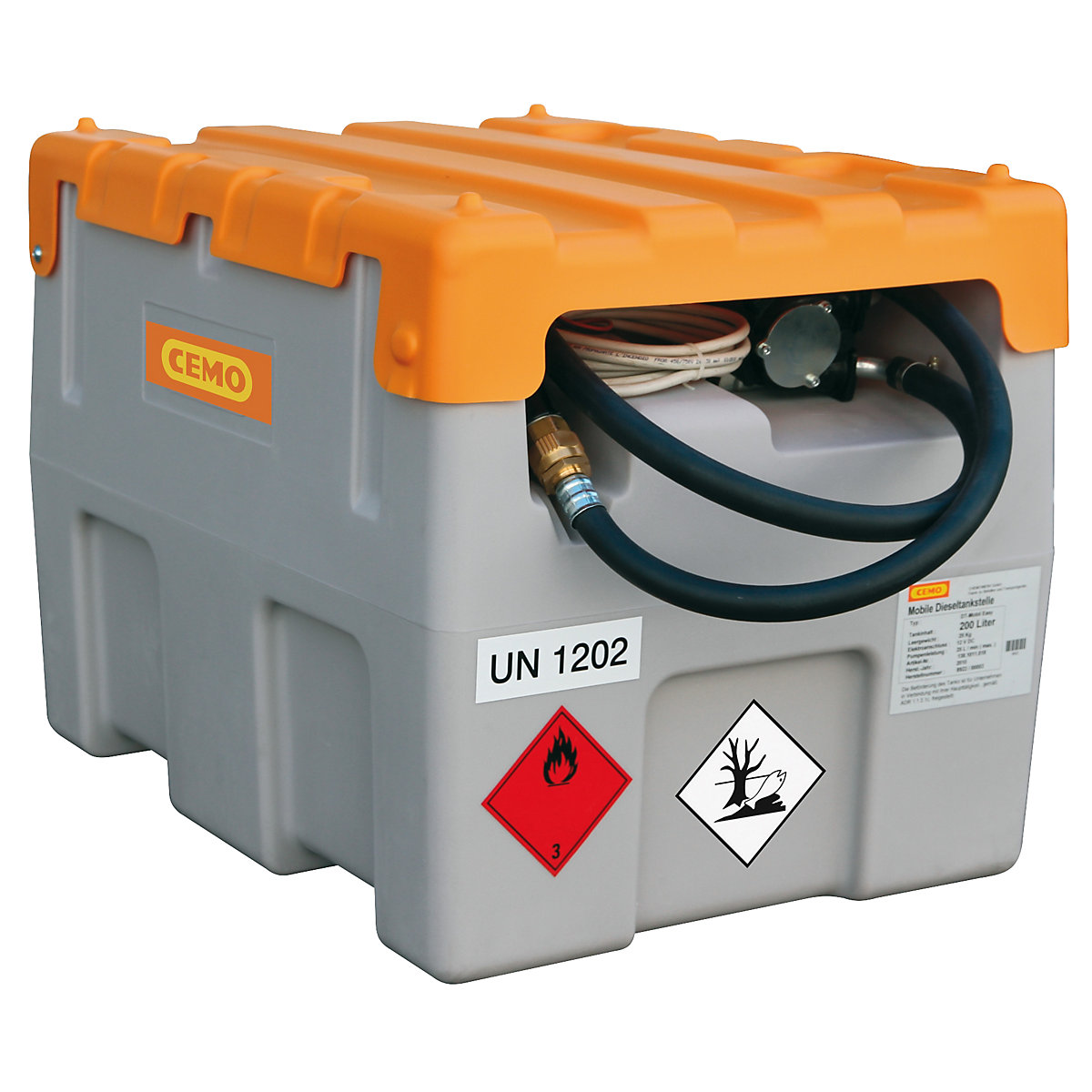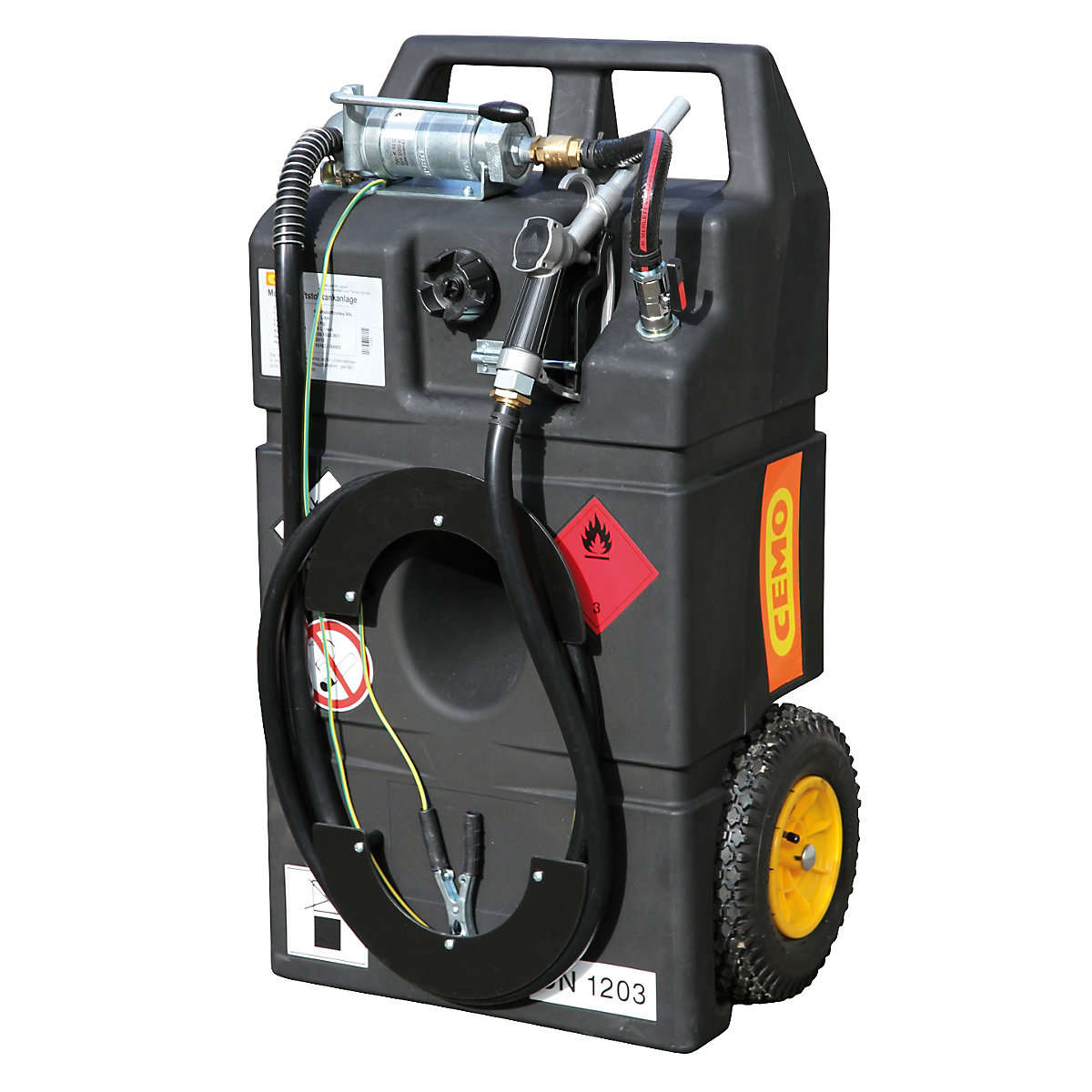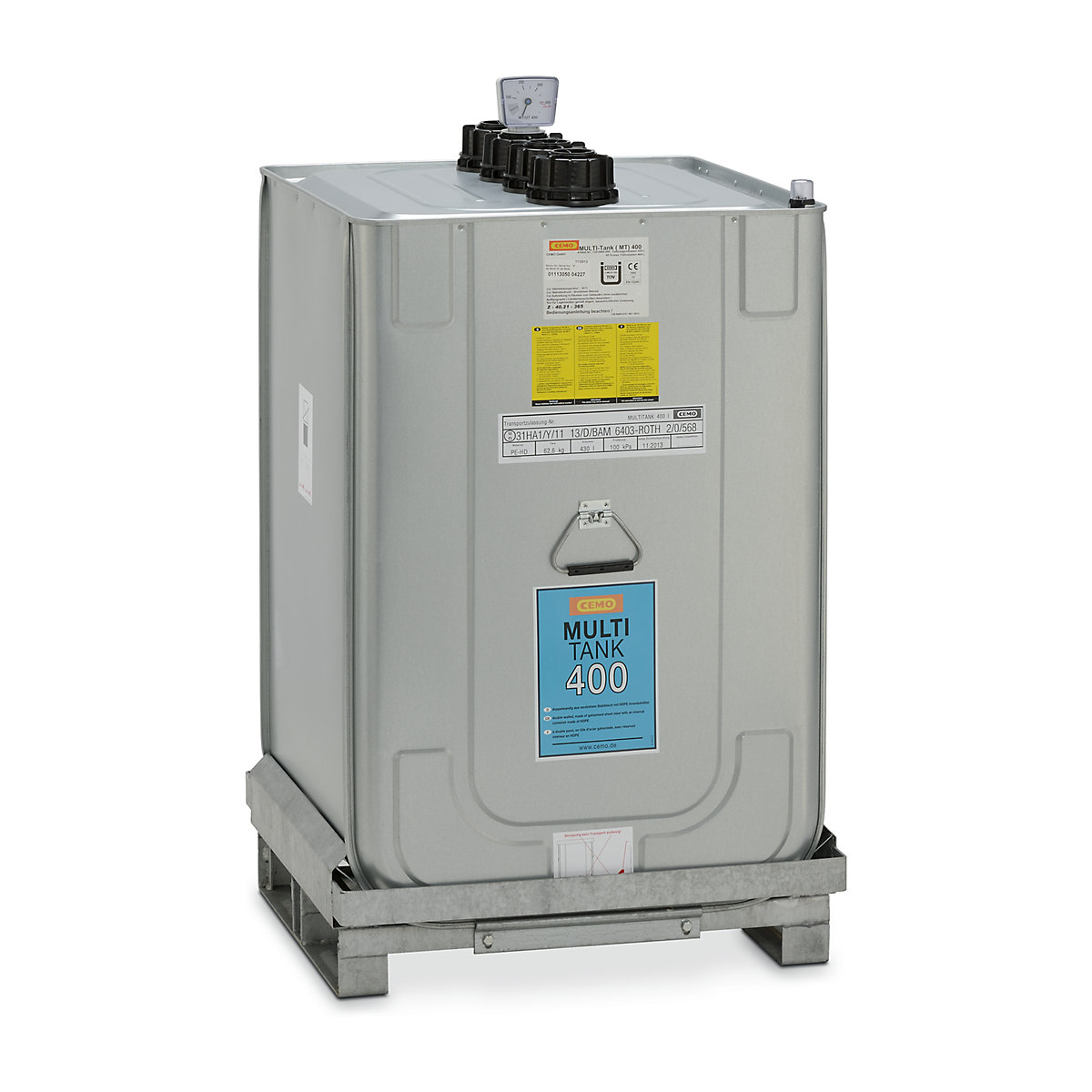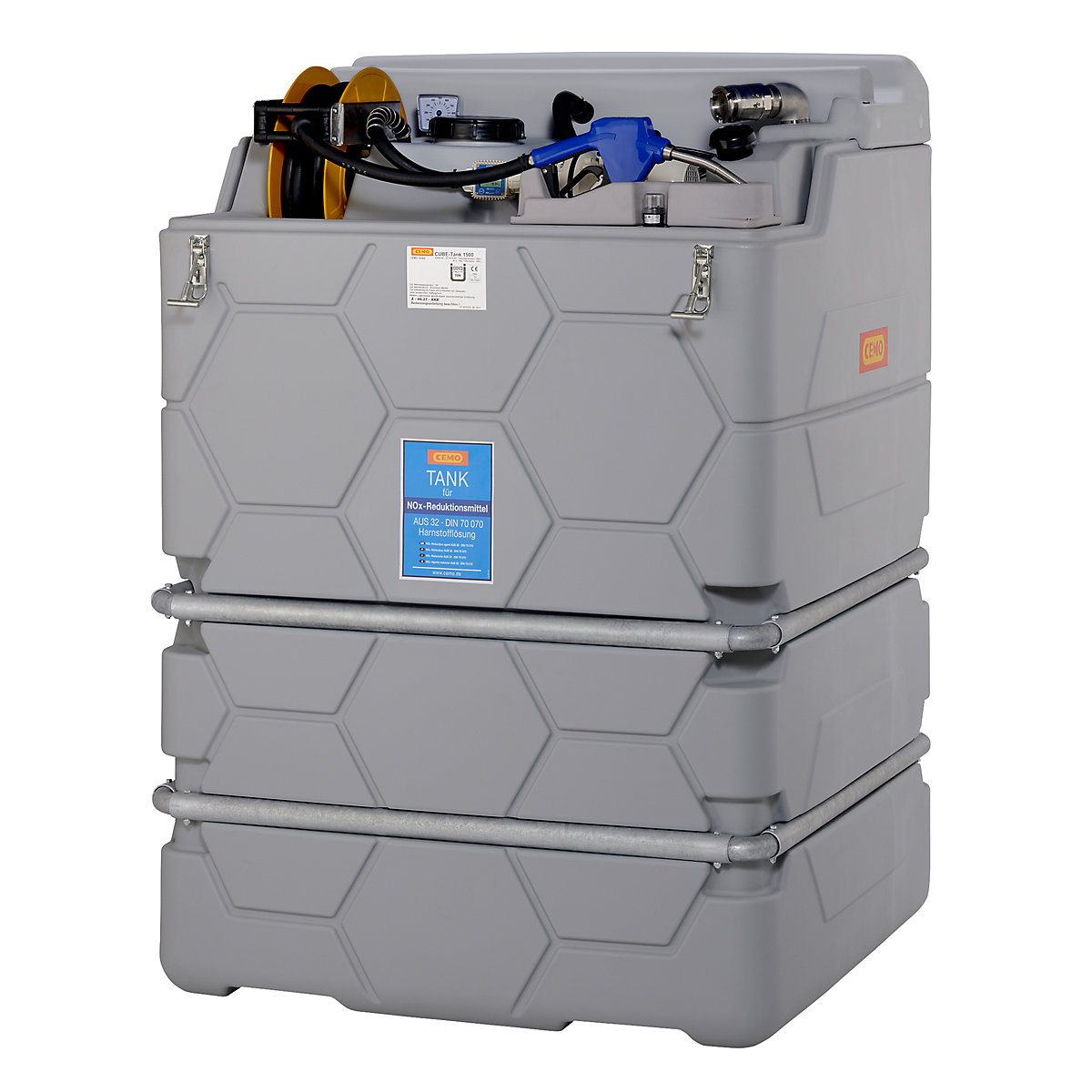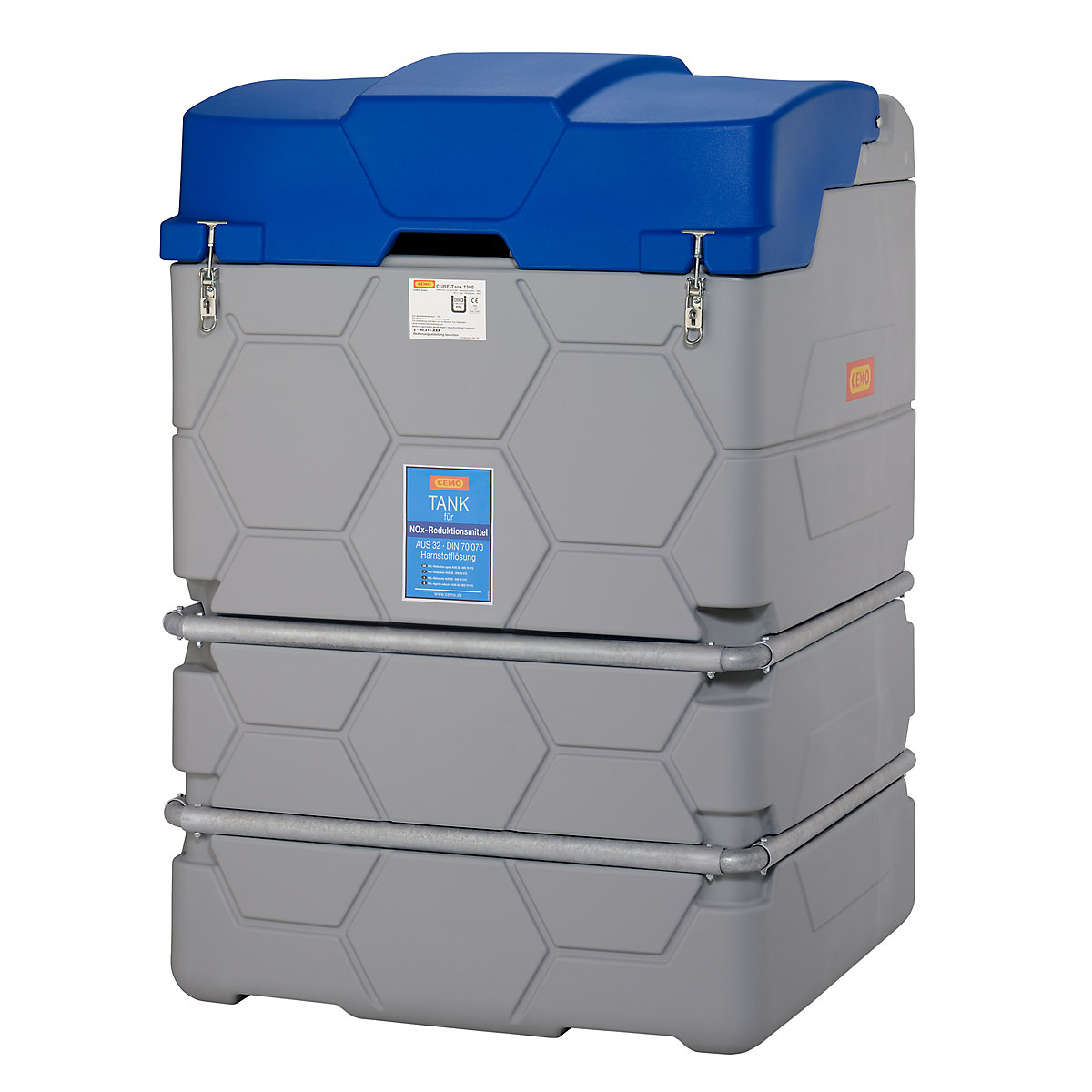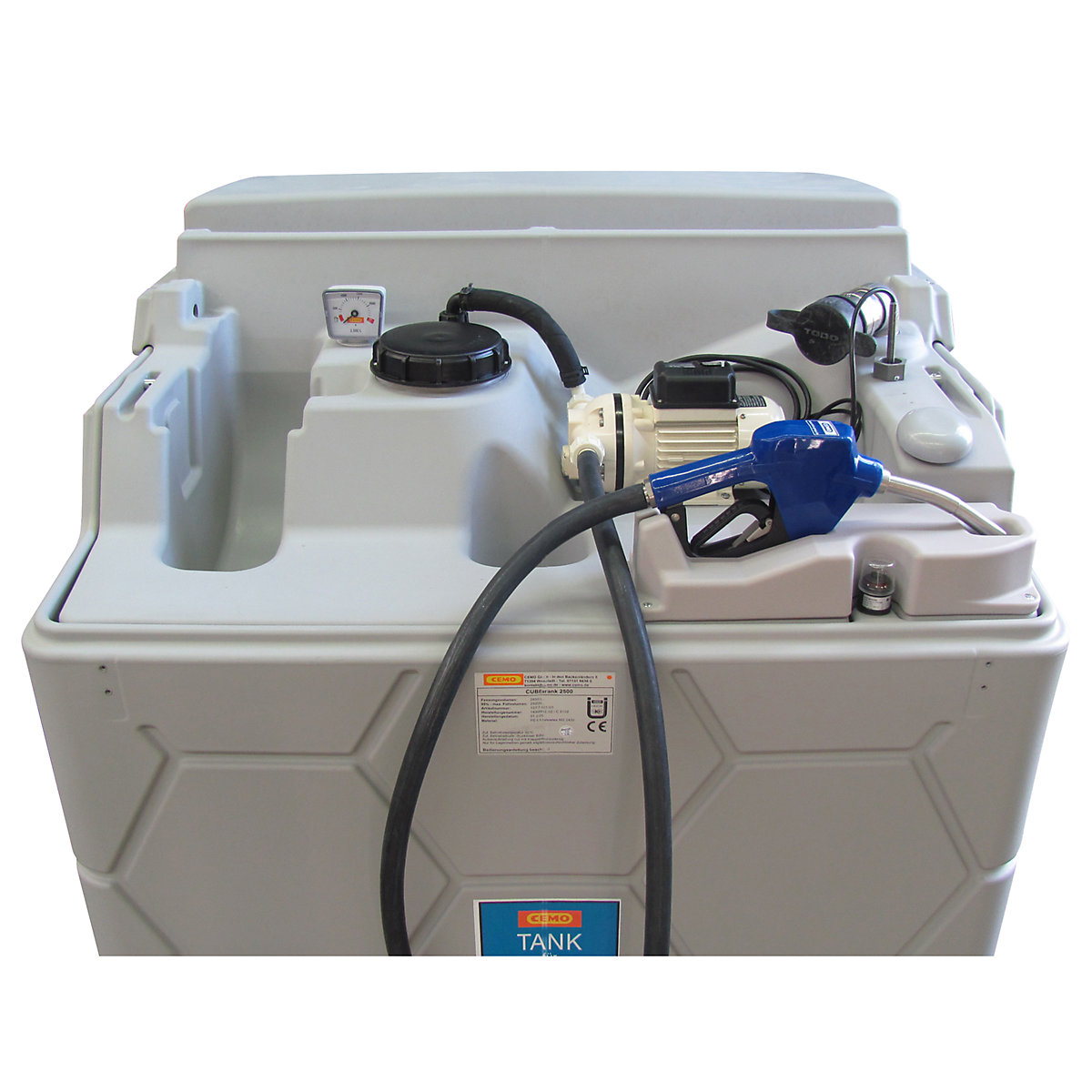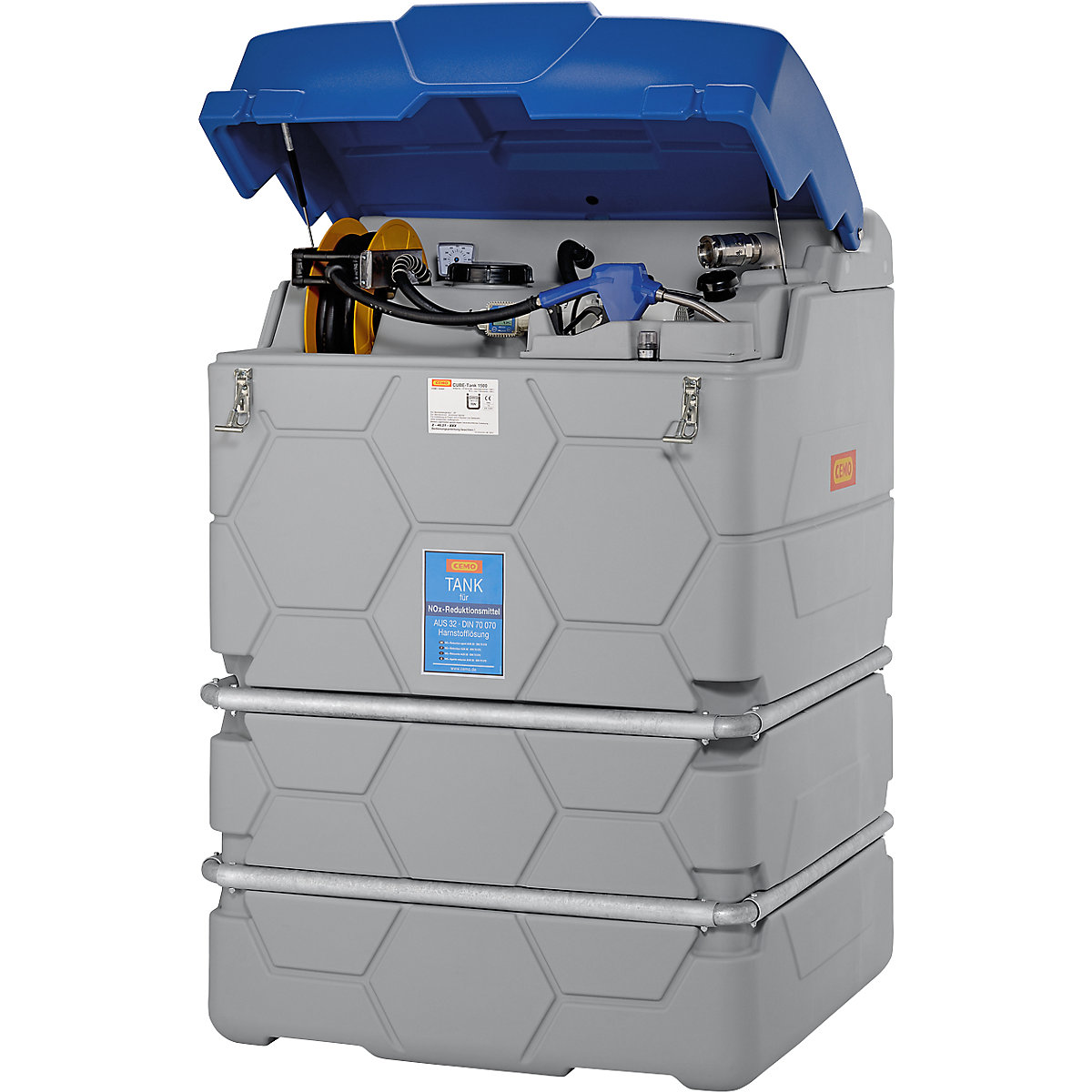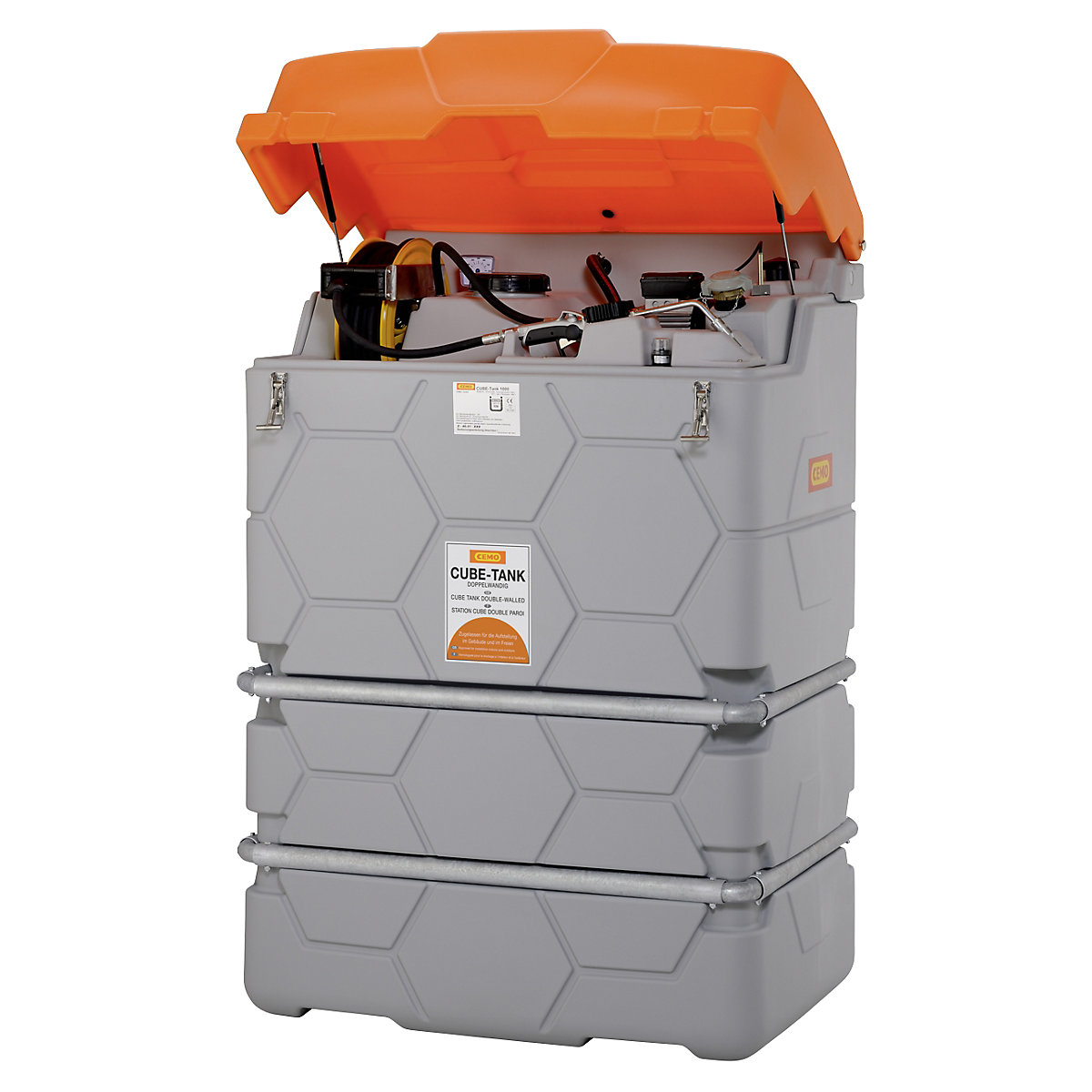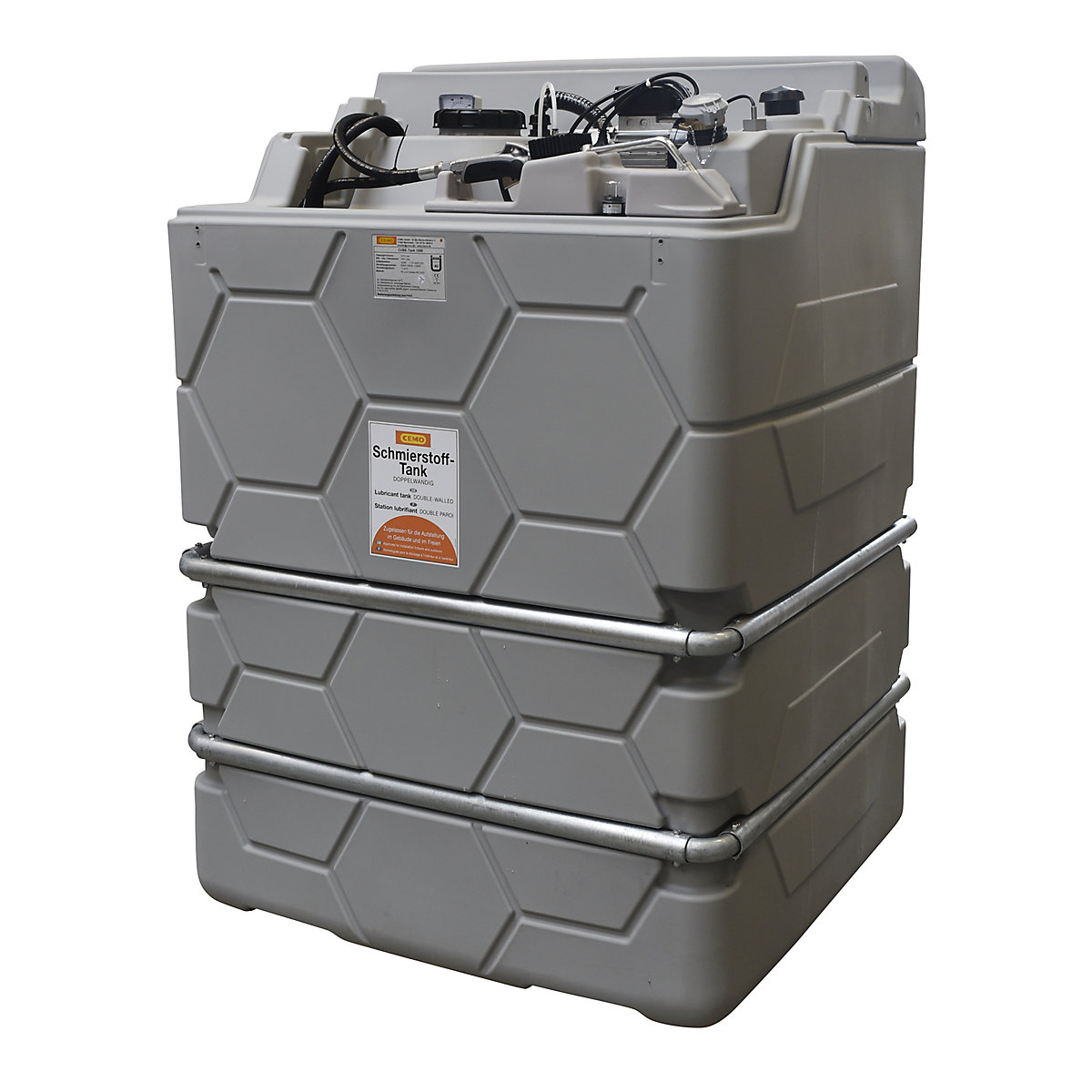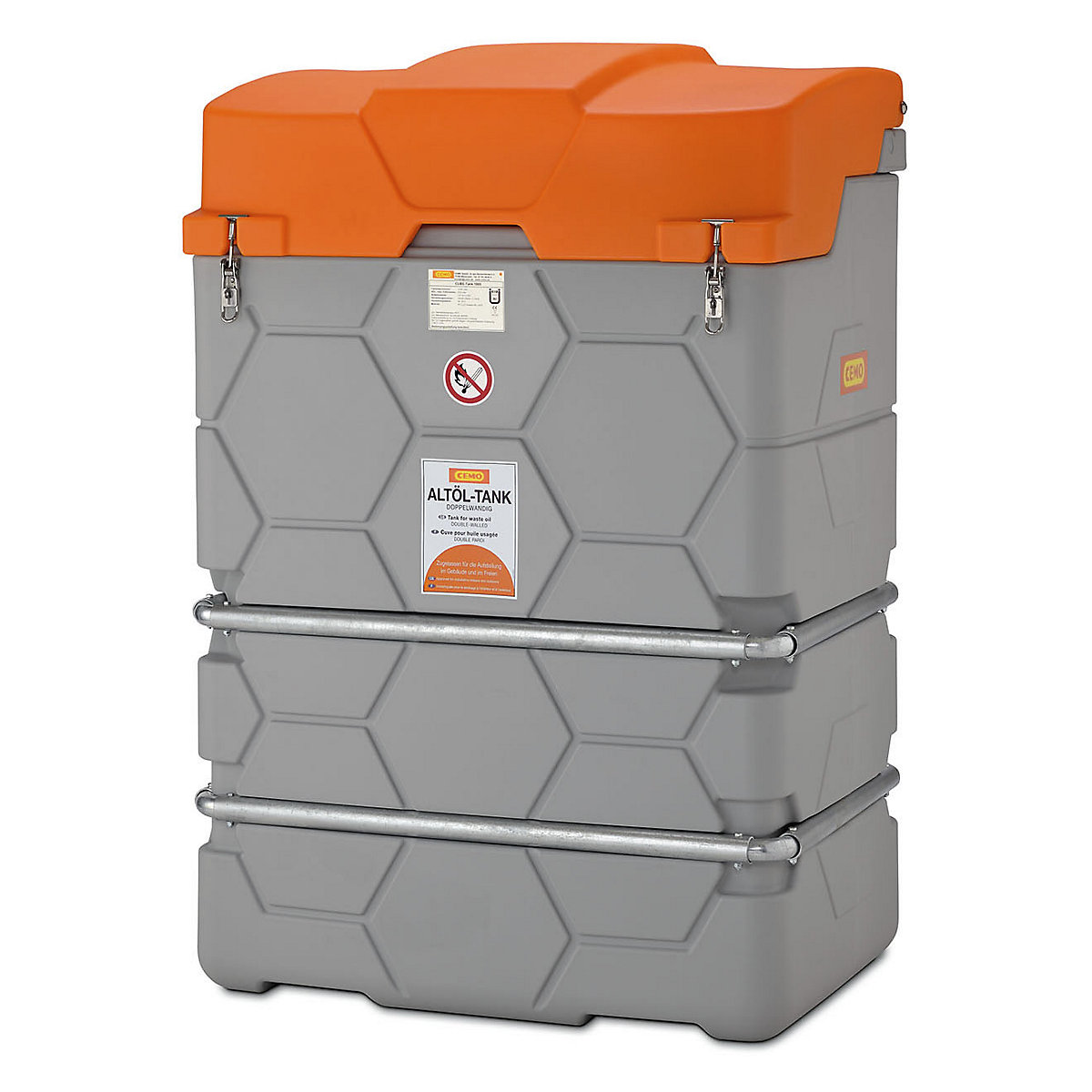Tank systems
Search for a petrol station every time you need a drop of fuel? Make this easier, more mobile and, above all, more cost effective by using refuelling systems for workshops and construction sites. Whether diesel tanks, storage tanks or mobile tank systems, with a capacity of up to 2,500 litres for your company fuel supply, you’re unlikely to run out of fuel again. Read on to find out exactly how this works and what you need to keep in mind.
In the category Tank systems we offer you products of the following brands: CEMO, PRESSOL.
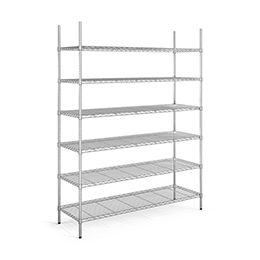
Tank systems: fill her up, please!
It’s when your vehicles and machines are in use miles away from the nearest petrol station at the latest that diesel tanks, storage tanks and mobile tank systems show the benefits they can have for your business. They will prove their worth before this, though – after all, your employees can say at any time: fill her up, please!
What distinguishes tank systems?
Diesel, petrol and heating oil tank systems for use in the company are mobile, compact alternatives to petrol stations. Much like a typical petrol pump, they come with a storage tank for fuel and heating oil, and a pump and a nozzle for dispensing the fuel. Unlike a typical petrol pump, diesel tanks and other tank systems are moved to the vehicle – and not the other way round. This allows you to refuel your equipment when out on the job, on a construction site or at work without any additional travel routes.
What is the difference between tank systems and storage tanks?
The range of storage tanks available is divided up in accordance with the categorisation of fuels and heating fuels as hazardous or, at the least, goods relevant to safety, based on the following criteria:
- Approved media (petrol vs. diesel vs. AUS 32)
- Approved for on-site and/or off-site transport
- Suitable for indoor and/or outdoor use
- Tank size and tank format
- Pump type (hand pump, electric pump, membrane pump, etc.)
- Transportability (drum trolley with pump, forklift pockets, carrying handles, belt guides, etc.)
What do I need to observe when using mobile refuelling systems?
Storage tanks or tank systems for fuels and operating materials are subject to the rules of hazardous goods handling for a good reason. Numerous regulations and instructions must be observed when using them:
1. The provisions in the international agreement concerning the International Carriage of Dangerous Goods by Road (ADR), among others, apply to their off-site transport. ADR approval is not required for certain AUS 32 tank systems.
2. Your employees do not need a dangerous goods driving licence as long as the tank system exhibits a maximum capacity of 1,000 litres for diesel tanks or 333 litres for petrol tanks. However, the ADR stipulates, among other things, that a fire extinguisher must be carried and that full and legible labelling must be applied to the tank.
In addition to the internationally valid ADR, there may be other country-specific regulations.
You should also keep this in mind: the functionality and general condition of the tank systems must be checked and documented by experts every 2.5 years, and an inspection must be carried out every five years. When filling and refilling the tank systems, it is essential that appropriate products for leakage management are used – absorbent agents such as absorbent fleece or a spillage emergency kit should always be taken along.
Please also read our Information on regulation compliant storage of hazardous materials. Questions are best answered in person. Simply contact us.


